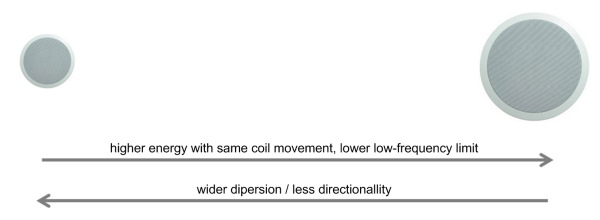Loudspeaker Directivity, Q, DI
Directivity Factor Q and Directivity Index DI
Directivity is a quantitative measure of the focusing of acoustic or sound energy. The directivity factor Q and the directivity index DI are indications of the ability to confine the applied energy into a smaller radian (spherical part).
Directivity Factor Q is the SPL ratio squared at the measured point (measured axis) to the mean squared SPL at the same distance over all directions together.
The sound energy from an omnidirectional sound source spreads omnidirectional outwards away from the source. This represents a Directivity Q = 1. Real sound sources like loudspeakers, instruments, talking persons, always have a more or less directed distribution pattern. In most applications it is also advantageous to focus the sound energy into a narrower beam to increase intensity in this direction and not to excite room areas that are no target for a reinforced system.
The Directivity Index DI = 10 log Q (dB)
Directivity Q and Directivity Index DI are very theoretical parameters and real loudspeakers tend to vary significantly. One manufacturer's 90x60 loudspeaker is not the same as the 90x60 from another.
Loudspeakers also vary widely in directivity versus frequency. A speaker may actually have a Q of 12 at 2kHz, it is likely that the directivity value would drop to a Q of 4 at 500Hz, and as low as a Q of 1 at 125Hz.
Relationship between Q and the distribution pattern of a loudspeaker (ideal situation without frequency anomalies):
| Q | Distribution Pattern |
| 2 | 180°x180° |
| 2.9 | 140°x140° |
| 3.7 | 120°x120° |
| 4.3 | 110°x110° |
| 5 | 100°x100° |
| 6 | 90°x90° |
| 8.7 | 60°x90° |
| 12.4 | 60°x60° |
| 18.3 | 60°x40° |
| 26.8 | 40°x40° |
|
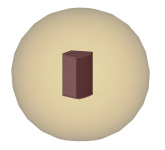 |
 |
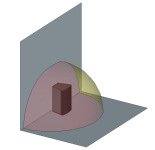 |
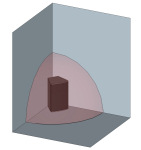 |
| Q = 1 |
Q = 2 |
Q = 4 |
Q = 8 |
theoretical gain for frequencies below about 150Hz : |
| 0dB |
+6dB |
+12dB |
+18dB |
|
 See: Q-Calculator.
See: Q-Calculator.
Fullrange Chassis Speakers
The larger a fullrange loudspeaker chassis is the more it is beaming with higher frequencies. As soon as the chassis diameter is 1/2 of the wavelength, this frequency is completely cancelled out 90 degrees sideways.
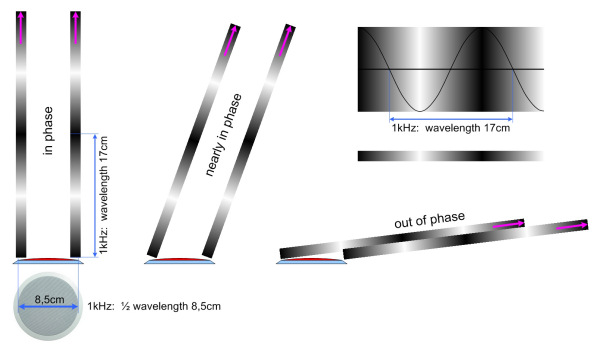 |
example: chassis width 8,5cm, frequency under test 1kHz - full cancellation near 90 degrees (strongly idealized!)
|
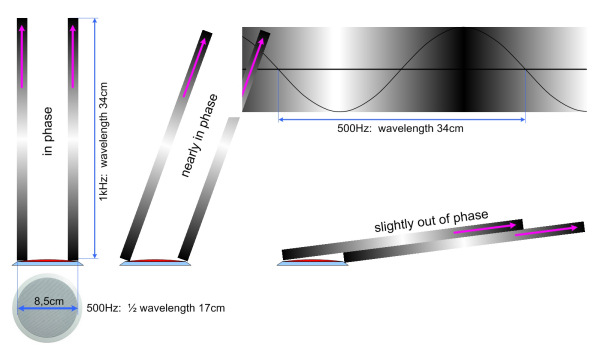 |
| example: chassis width 8,5cm, frequency under test 500Hz - only slight cancellation near 90 degrees |
The lower the frequency the beamimg effect is less, the higher the frequency the beaming effect is stronger. The smaller the diameter of a fullrange loudspeaker chassis the less beaming with high frequencies occurs. (But smaller diameter chassis are less powerfull and need larger coil movement to put out the appropriate energy!)







